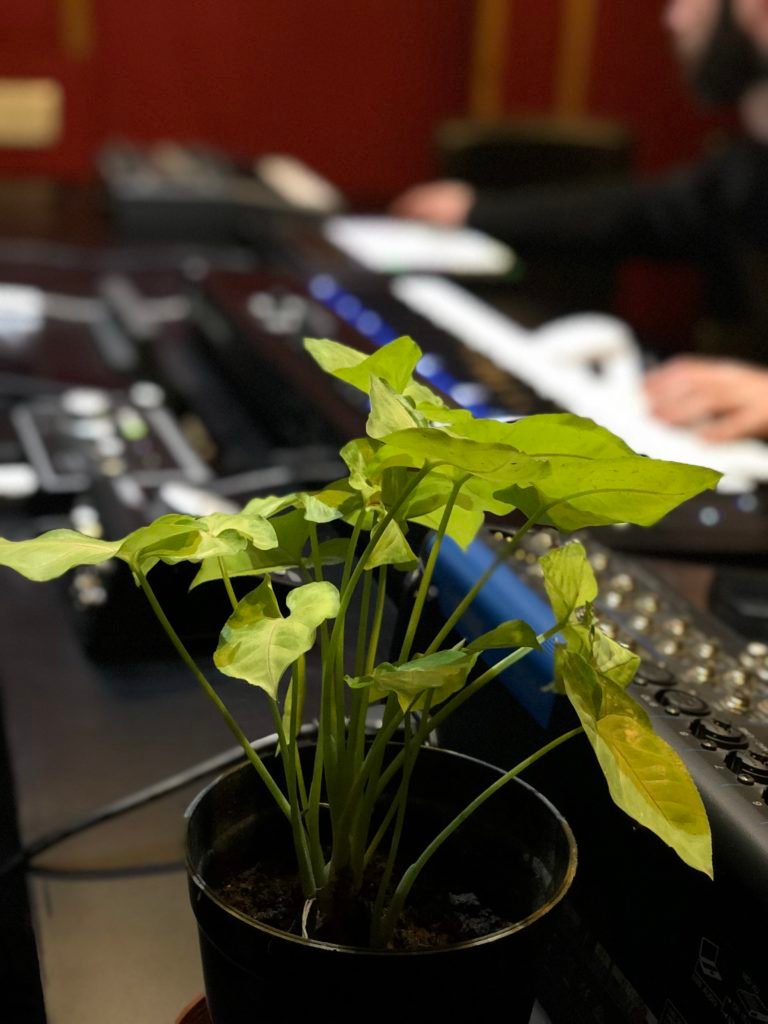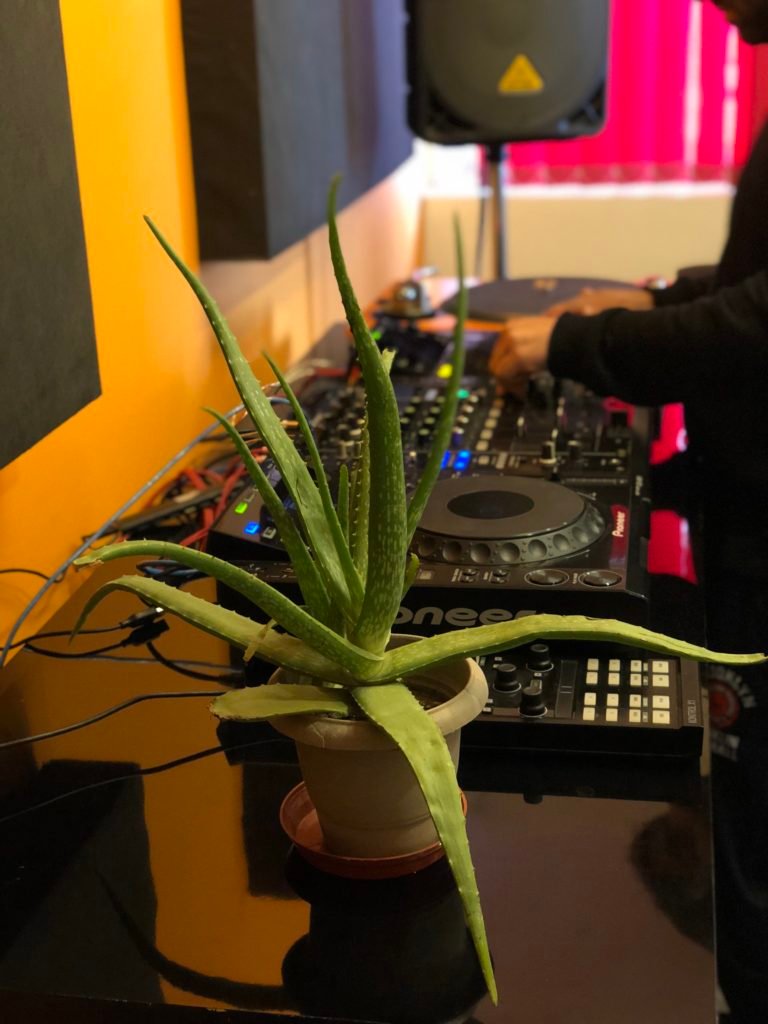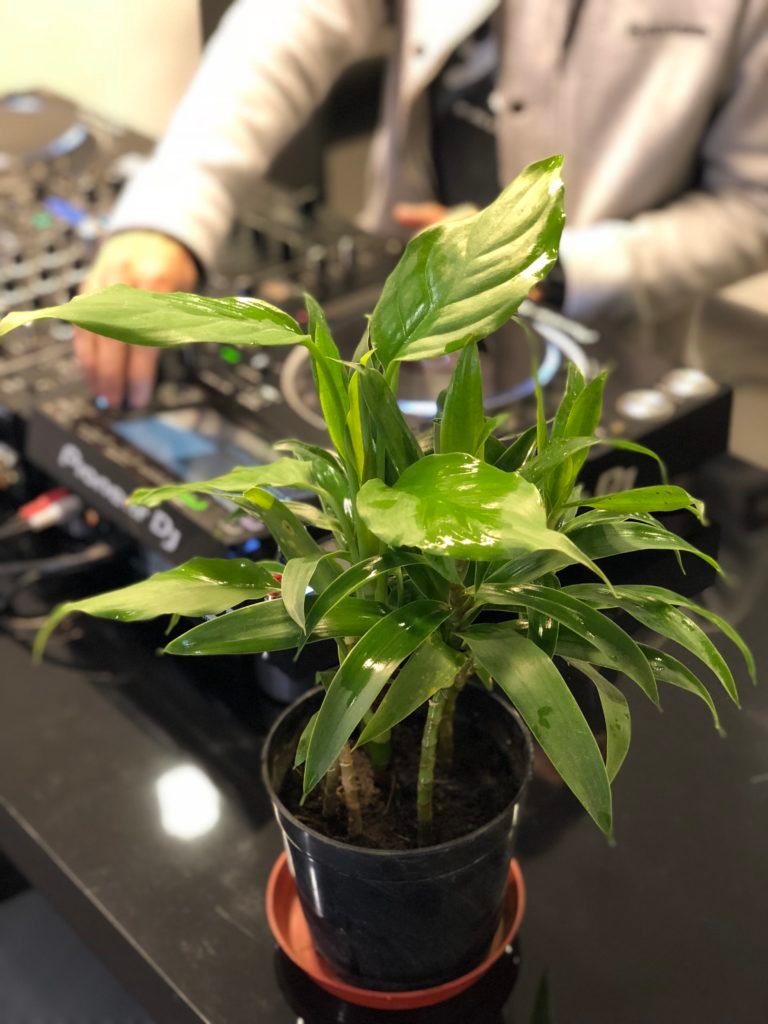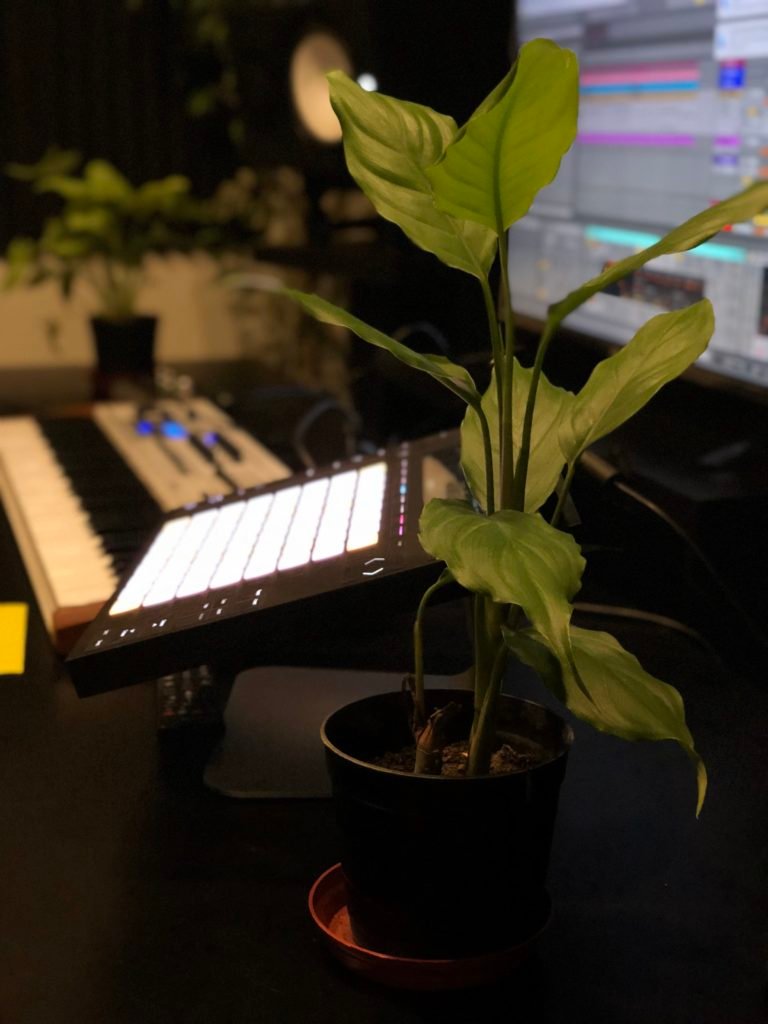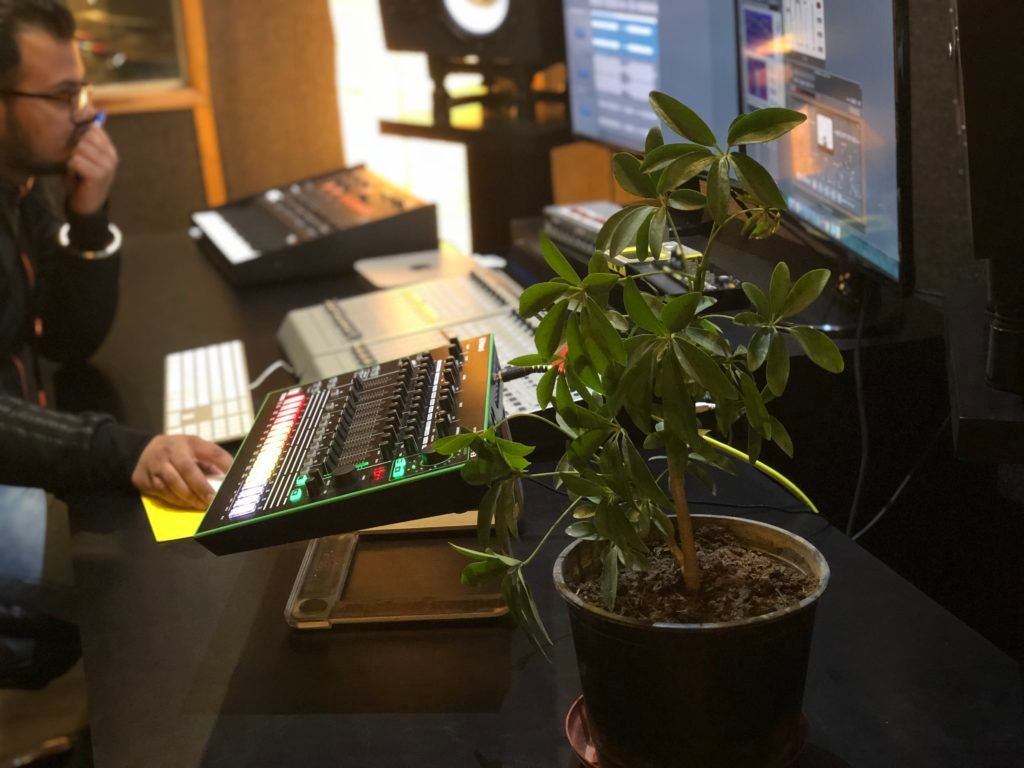Plants in your studio are the best thing for your workspace. Wondering how a piece of green can actually boost your work rate?
It contributes in more ways than one. Plants have a unique relationship with the creative as well as the technical aspects involved in a studio environment. They facilitate an array of health factors that enhance the workflow of engineers in the studio. The Plant, as well as the potting media, helps as an absorber for acoustics. A common problem that studios face is the issue of stale air. The smell lingering inside the premises because of the heavy amount of isolation doesn’t help either.
Plants help get rid of stale air and foul smell through air purification as well as better circulation. The toxic gasses like formaldehyde and benzene from new furniture are also cleared off from the room contributing to healthy respiration. Healthy respiration, in turn, contributes to smooth mixing and mastering sessions where producers need to be at their physical best in order to produce the best results.
If the studio is located in an area that is very polluted, studio plants help increase the overall humidity which further helps reduce the amount of smoke and dust from the air, making the studio fresh and clean for use. Additionally, green has been known to be the colour that sparks innovative thinking; a general foreground to studio-based work. A producer in an innovative environment would be able to create better chords as well as melodic structures.
A plant inside a studio also reduces fatigue which is a boon for studio engineers who literally spend hours getting a mix right. However, it is very important to determine which studio plant would be both beneficial as well as habitable in a studio environment.
We placed plants in our own studios as well, a few of our recommendations are as follows:
Reed Palm / Chamaedorea
Benefits:
- Filters out Benzine and Trichloroethylene
- Good for placing around furniture that could be gassing off formaldehyde.
Dracaena Mahatma / Cordyline

Benefits:
- Reduces fatigue, sore throats, coughs and a range of illnesses related to cold.
- Increases the level of humidity and reduces the amount of dust.
Syngonium / Araceae

Benefits:
- Clears out toxins like toluene and benzene.
- Best for environments where there is lots of dust and smokers.
Aloe Vera Plant / Aloe barbadensis

Benefits:
- Improves air quality. Rated as the top air-purifying plant by NASA.
- Helps in respiration.
- What’s more, you can use this studio plant is a great home-remedy plant as well for cuts, burns and even better skin.
Dracaena deremensis / Dracaena fragrans

Benefits:
- Creates a relaxing atmosphere.
- This Studio plant will help Control humidity and reduce toxins.
Philodendrons / Philodendron bippin

Benefits:
- Purifies air for xylene that enhances the positivity of the environment.
- Calls for a healthy environment.
Schefflera / Schefflera arboricola

Benefits:
- Clears out toxins like toluene and benzene.
- Best for environments where there is lots of dust and/or smokers.
Some maintenance tips for your studio plants:
1. Heat and Light
- Most indoor plants require less amount of sunlight but sunlight is essential, so place your studio plants as close to natural light as possible.
- In case there is no natural light, the rotation cycle should be faster.
- Keep plants as far away from air conditioners and heaters as possible.
2. Watering the studio plants
- Regular watering is important. An indoor thirsty plant would die faster.
- Avoid overwatering as it results in root rot.
- As a start, the soil surface can be dry but the underlayer if moist should not be watered. In the absence of enough heat and light, water tends to stagnate and can cause the production of fungus.
3. Soil
- Use a neutral soil, avoid decomposing matter.
- A better alternative to natural soil would be grow-bed media such as no soil or clay pellets.
- If you are using vermicompost or other natural soils, you can cover the top with clay pellets, wood chips or neutral gravel. This would avoid any rot and also the creation of dust in the studio. Don’t worry your studio plants will still thrive in this medium.
4. Cleaning your studio plants
- With the leaves of the studio plants at-least once a week with a damp cloth. This will not only give them a fresh look but will also remove any dust that may have settled on them, allowing them to do a better job of purification.
- Remove any dead leaves to avoid rot.
- Check the soil for moss or rot and change watering patterns or sunlight to keep them healthy.
5. Rotate your plants
- It is a good practice to rotate your plants from indoor to outdoors, to allow for the studio plant to benefit from natural sunlight and fresh air.
- Do this at the least once every 3 weeks based on how your plants are doing and the ventilation in your studio.
All of the above are tips should help to keep your green friends up and healthy. Put in the effort and dedication to maintaining a plant in your studio, and it should thrive for a long time.





